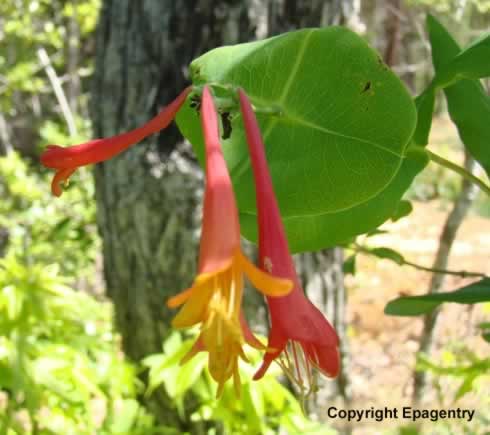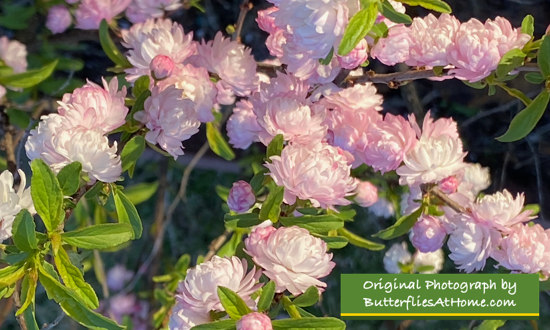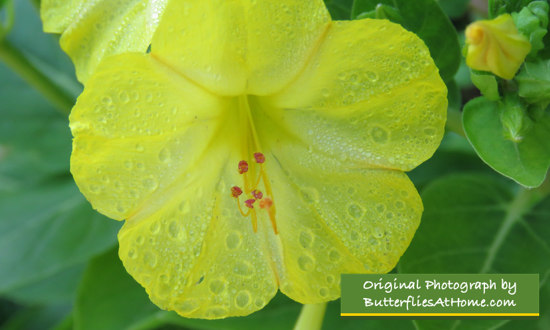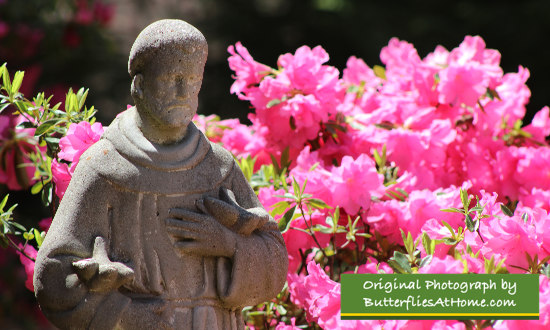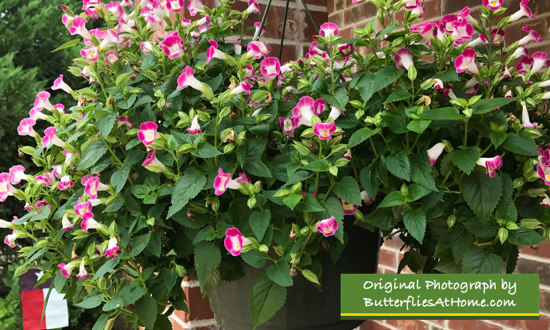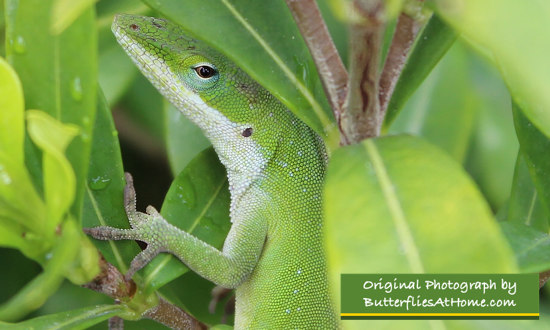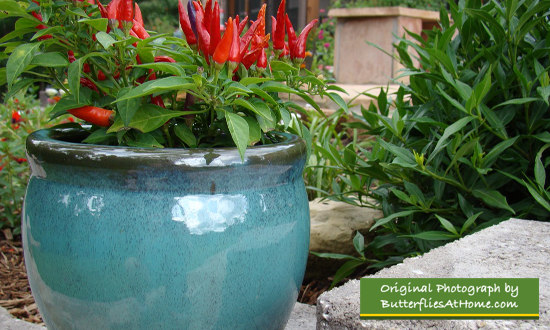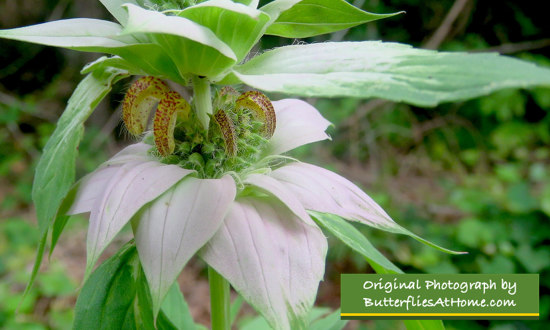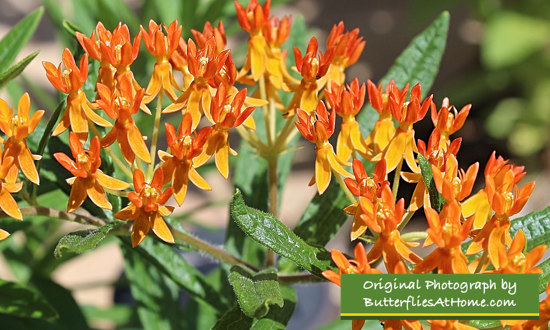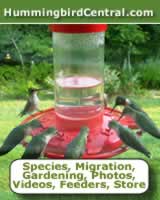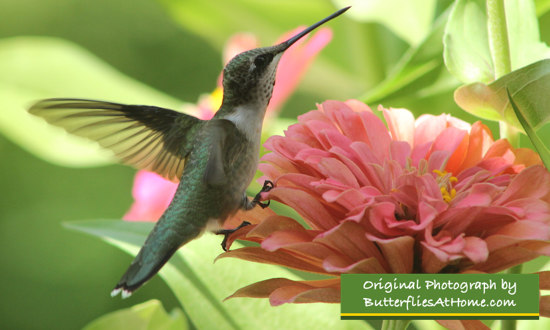 |
East Texas Flowers & Trees
We love gardening, and landscaping, and Tyler as well as all of East Texas is a great place for that pasttime!
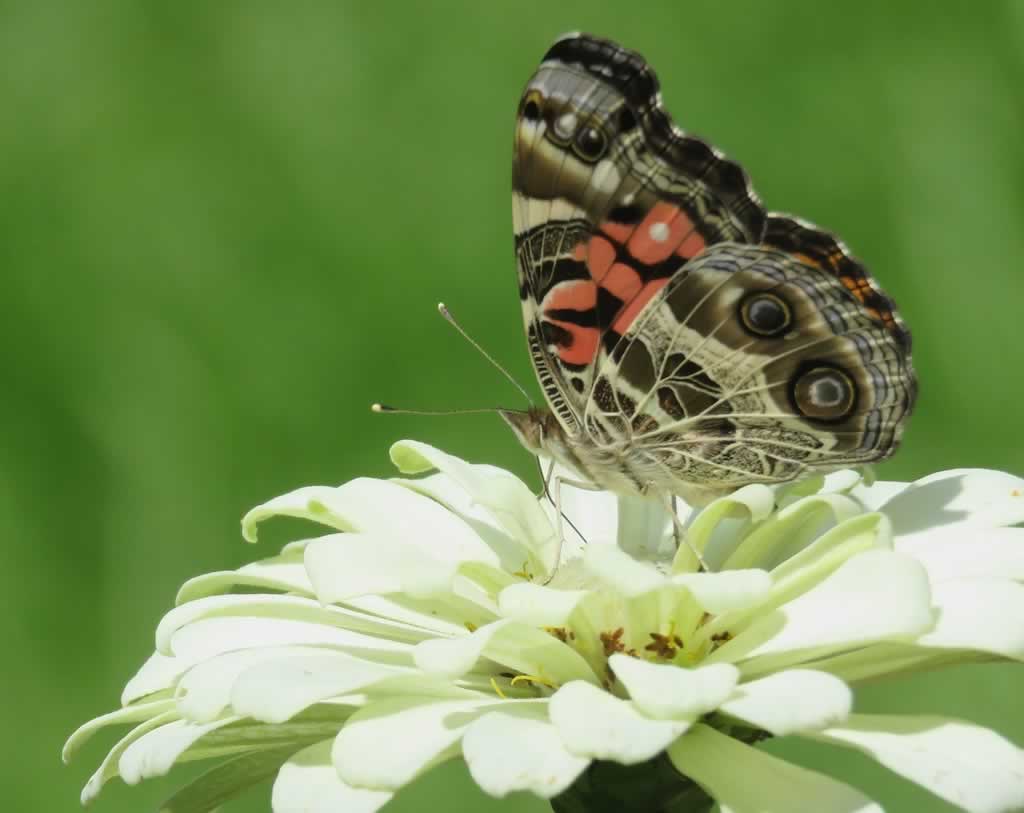 |
Our interests include not only common flower varieties such as Pansies, Begonias, Irises, Daffodils, Impatiens and Zinnias, but also wildflowers and ferns an other native East Texas plants, trees and vines.
Our home gardens are located in the country just outside the Tyler city limits, backing up to hundreds of acres of forest, with nearby fields, pastures, and wetlands. It is registered by MonarchWatch.org as a certified Monarch Waystation.
We share our environment with birds, foxes, raccoons, snakes, armadillos, deer, skunks, turtles, coyotes, bobcats, and possums. During the warm months we enjoy countless varieties of butterflies, and Ruby-Throat Hummingbirds.
The landscape includes a variety of native trees such as oak, elm, river birch, maple, gum, pine, cedar, and dogwood. Under the tree canopy we find Beauty Berries, Pokeweed, Devil's Walking Sticks, Wax Myrtles, cactus, and ferns.
The native plantlife is complemented with additional annuals, perennials, flowering shrubs and vines. We've included in our gardens several types of Lantana, Zinnias, Butterfly Bushes, Pentas, Salvia, Batface Cuphea, Nasturtiums, Coreopsis, other annuals and perennials.
We also plant generous amounts of dill and fennel to provide food sources for Black Swallowtails, and Milkweed for Monarch butterflies.
While we haven't personally experienced every type of bird or butterfly, or grown all of the common flower species available today, our photo archive is extensive, and we will be posting many of these on our websites over time.
Flower Destinations and Events in Tyler
Tyler is the Rose Capital of America, the location of the Tyler Rose Garden, the nation's largest municipal rose garden, and the site of the Annual Texas Rose Festival held each October.
Photo of the grounds of the Municipal Rose Garden, Tyler, Texas (TylerTexasOnline staff photo)
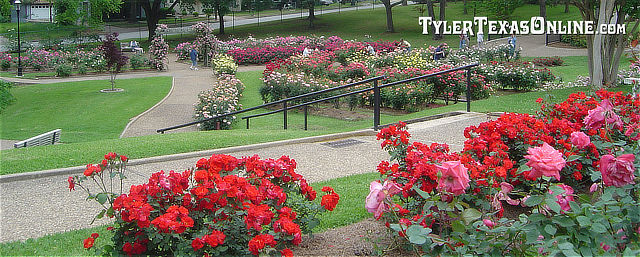
A highlight of the spring season in East Texas is the 8-mile long Tyler Azalea & Spring Flower Trails guiding visitors through neighborhoods of brick streets, residential gardens and historic homes.
Along Dobbs Street during the Tyler Texas Azalea & Spring Flower Trails
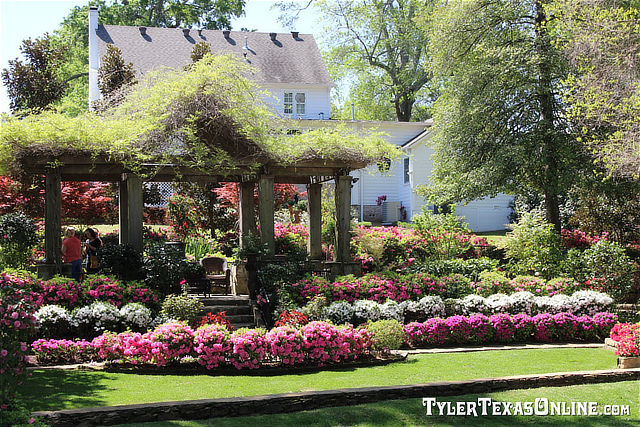
Other East Texas Flower Events and Arboretums
East Texas is home to a wide variety of beautiful botanical gardens and arboretums of interest to residents and visitors alike.
Choose between formal gardens, small parks, and large urban arboretums.
Popular stops include the East Texas Arboretum in Athens, the Mast Arboretum in Nacogdoches, the new Longview Arboretum, the Davey Dogwood Park in Palestine, and Helen Lee's Daffodil Gardens near Gladewater.
If one ventures a bit out of East Texas, garden lovers will enjoy the Lady Bird Johnson Wildflower Center in Austin, the Dallas Arboretum & Botanical Garden, the Gardens at Texas A&M in College Station, the Fort Worth Botanic Garden and many, many other great venues!
Photograph Gallery of Native East Texas Flowers and Trees
Shown here are some favorites of native plants that we love in East Texas ... we'll get more posted from our archives shortly ... so visit again soon.
Many of these photos are also available on our other website - www.ButterfliesAtHome.com
On that site we feature dozens of butterflies and moths found in Texas, and other locales, with their sizes, host plants, caterpillars and other pertinent information.
Butterflies, like birds and other animals, need food, water, and shelter, the basic necessities of life. In addition, butterflies like direct sunlight, and heat. They are cold blooded creatures, and thus need warm resting places such as flat stones, or bricks.
Butterflies use sunlight to regulate their body temperature. They need sunlight to keep themselves warm, but the outside temperature can also become too hot for them.
Native Passion Vine blooming in East Texas ... The Maypop
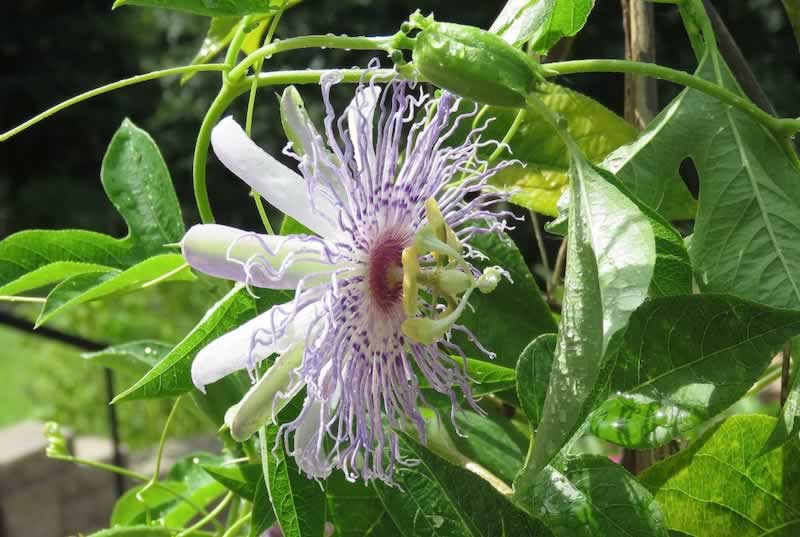
Spotted Bee Balm growing in the wild in East Texas woods
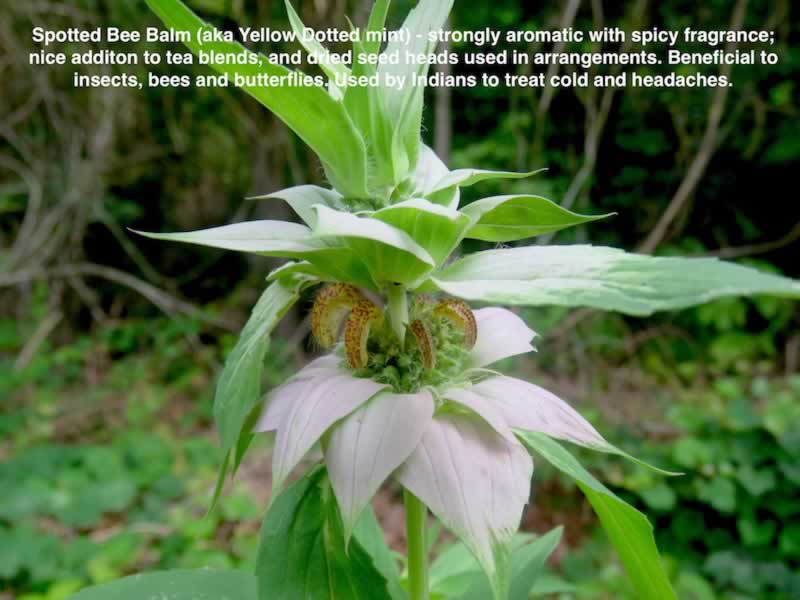
Elephant's Foot, or Devil's Grandmother, in the woods of East Texas south of Tyler
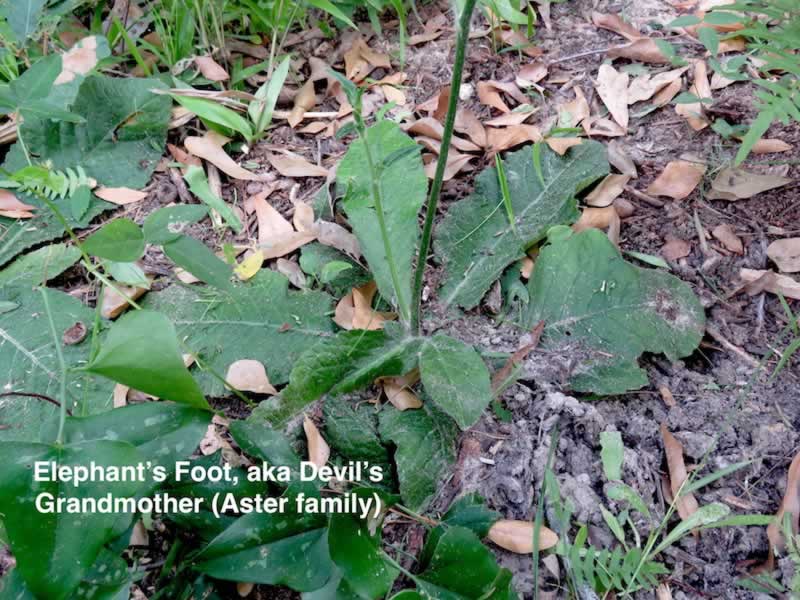
Young Black Hickory Tree starting its growth in a deep forest area near Tyler
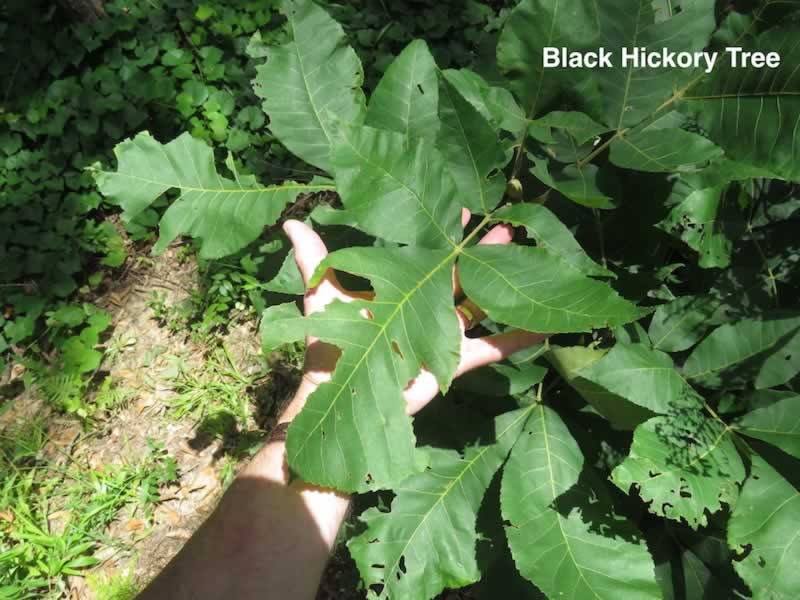
Texas Pokeweed
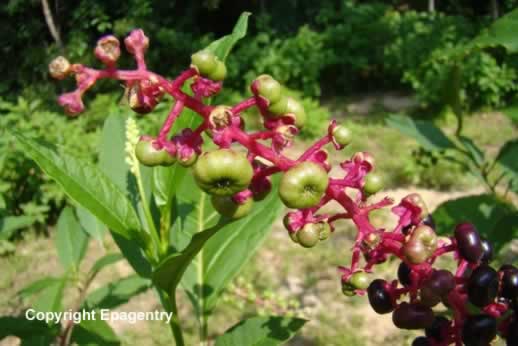
Devil's Walkingstick, a native plant in East Texas
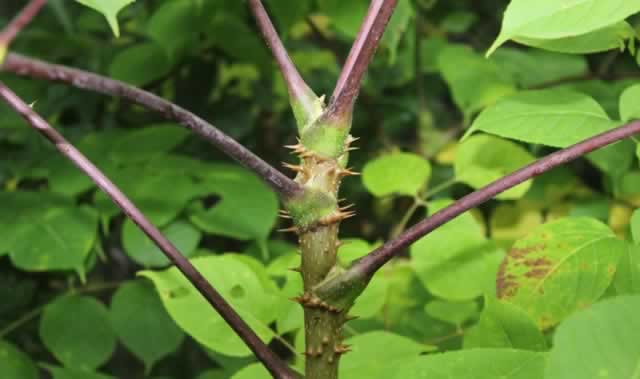
Yellow Prickly Cactus growing in the wild in East Texas
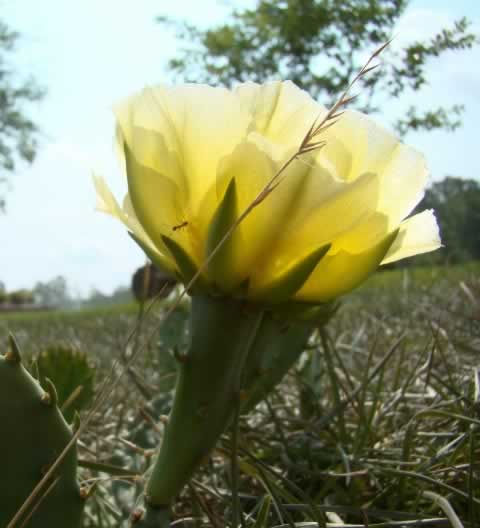
Bracken Ferns in Texas Woods
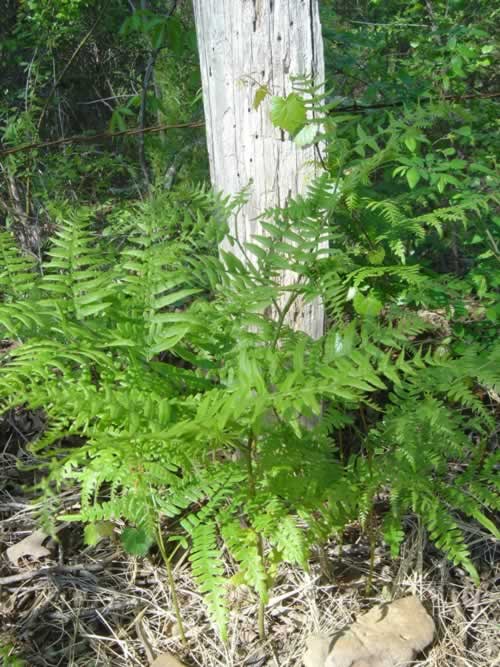
A prolific grower in the East Texas forests ... American Beautyberry
It produces small greenish-white flowers in early summer, followed by clusters of beautiful purple berries in late summer. 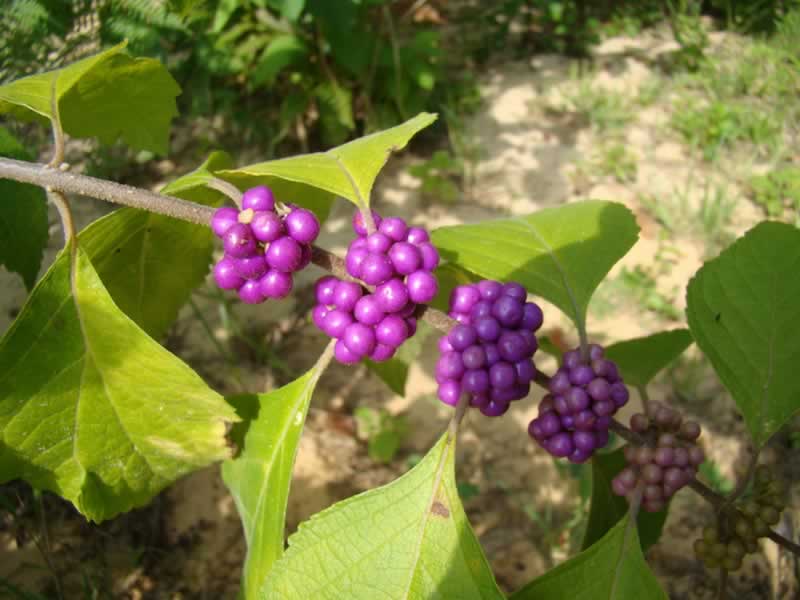
Wild, native Coral Honeysuckle in Texas |
Colorful native Maple Tree leaves in the Fall in Tyler Texas

Native Wax Myrtle ... an easy to grow large shrub or small tree in Texas
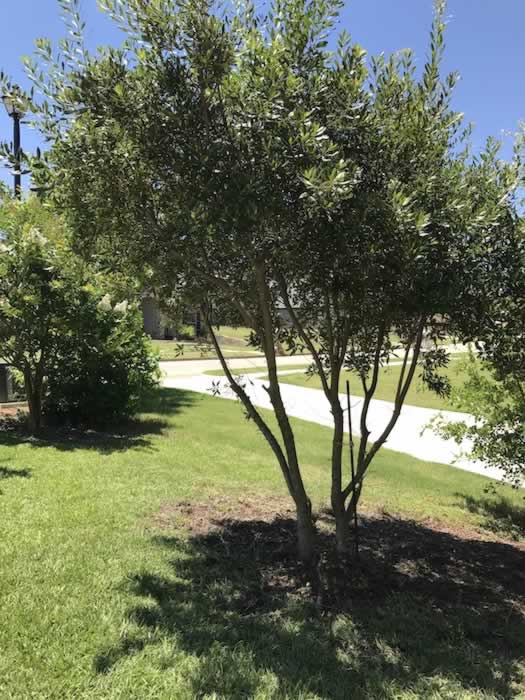
Dogwoods in Spring in Texas
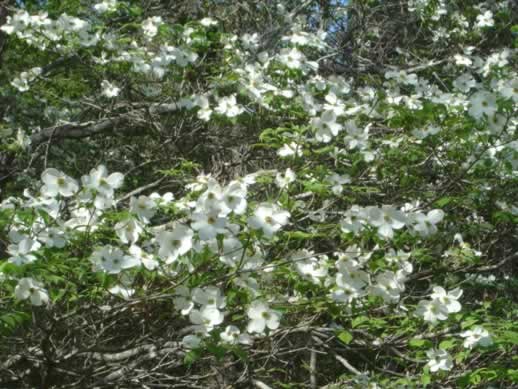
Dogwood tree covered with red berries at peak fall color in East Texas
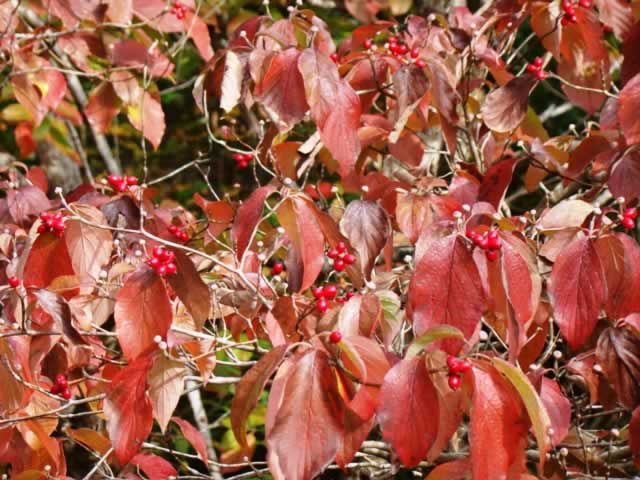
What We Grow in Our Tyler Garden ... and Some Suggestions for You!
Included below is a discussion and photos of our favorite plants in our home landscape in East Texas! Hopefully, some of these will work for you in your garden, or stimulate some ideas that you might pursue.
Flowers and butterflies go well together, so many of our photos feature those magnificent butterflies that inhabit our home garden!
Butterfly Bush
We currently have an assortment of butterfly bushes planted, and all are favorites of the butterflies as well as hummingbirds. Butterfly bushes (Buddleia davidii) usually bloom from mid-July through frost, producing long 4-5 inch flower spikes which look and smell like miniature lilacs.
Buddleias produce a honey-scented fragrance that lures butterflies to its blooms, and then once there, they find the flowers super-rich in nectar.
We utilize both full-size and dwarf varieties, in white, purple and reddish colors. Full-size species can grow large in just one season in a mild climate, perhaps 6 feet high and 6 feet in diameter.
Make sure they are planted in well-drained soil, and resist the temptation to overwater them.
The major drawback to butterfly bushes is that they never drop their dead blooms. We cut the dead blooms periodically, and also trim the bushes in areas where space is a limitation. They are often frost proof to about 25 degrees; below that, they will freeze to the ground, and in milder climates spout and grow from their base the following spring.
Some favorite varieties of butterfly bush include Adonis Blue, Purple Emperor, Pink Delight, White Profusion, Nanho Purple, Black Knight and many others.
Pink Butterfly Bush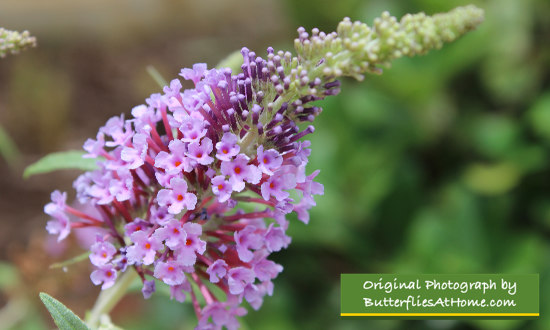 |
Common Buckeye on Butterfly Bush 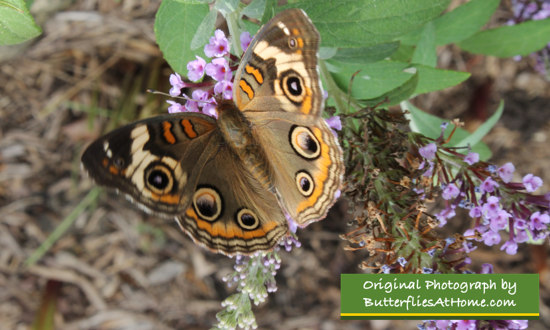 |
Variegated Fritillary  |
American Lady 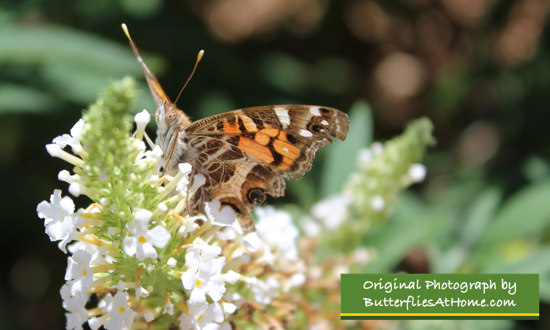 |
Lantana
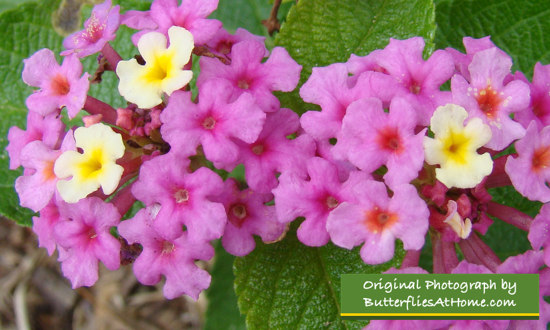 |
We love lantana, as evidenced by the fact that we have over 45 plants growing now, consisting of several varieties, from yellow to white to red to orange.
Lantana is super heat tolerant, and are typically pest and disease free. It does best in a minimum of 6 hours of direct sun a day.
Lantanas are perennials in warmer climates, and will flower in full sun or light shade, preferably in well-drained soil. As semi-desert natives, they bloom best when not overfed or over watered. Lantanas are frost proof to about 25 degrees; when they do freeze, in milder climates they will spout from their base in the spring. Here in Tyler, much of our Lantana survive winter, some even the severe Winter of 2021!
| Julia Heliconian on Lantana |
Lantana ... and One Ant!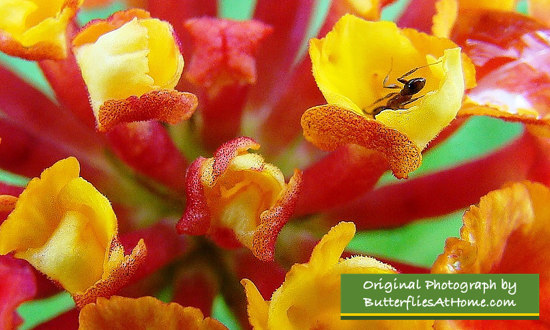 |
Sulphur on Lantana 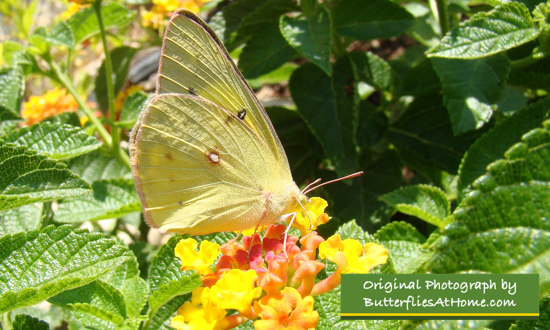 |
Pearl Crescent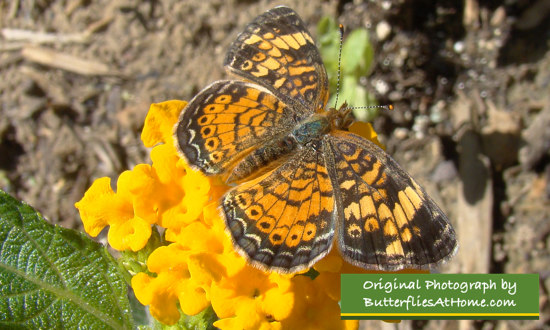 |
Milkweed
Milkweed is a critical food plant for Monarch larval (caterpillar) stages, which feed almost exclusively on several different species of milkweed (Asclepias).
A commonly grown variety is Tropical Milkweed (Asclepias currassavica), an introduced species of the subtropics that has naturalized throughout North America. The bright orange and yellow flowers are concentrated in compact clusters at the top of branching stems. Tropical Milkweed prefers full sun to partial shade and is not extremely sensitive about soil types. It can be cut back and will resprout rather quickly.
We often see milkweed loaded with aphids, those yellowish tiny, sap-sucking insects that crowd toward the tops of milkweed. Sometimes we wash them off with a water blast from the hose, but they usually return, and don't damage the plant.
Monarch on Tropical Milkweed 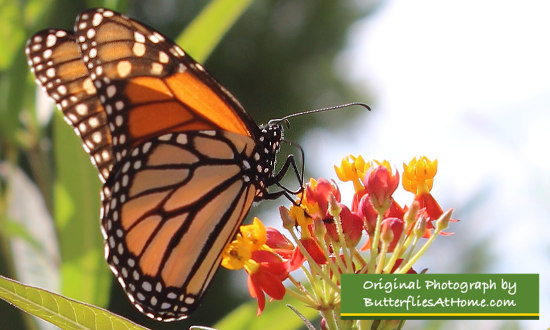 |
Spicebush Swallowtail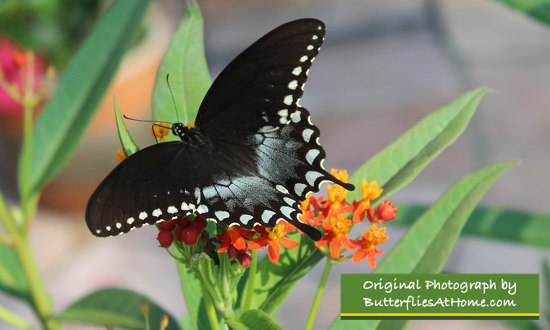 |
Black Swallowtail 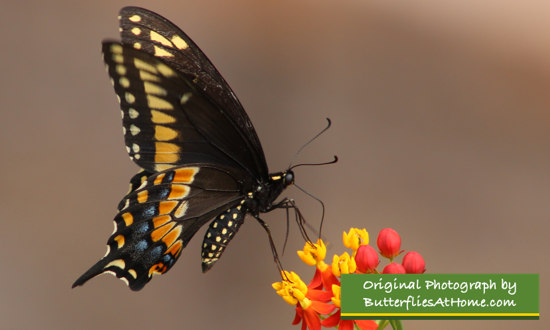 |
Checkered White 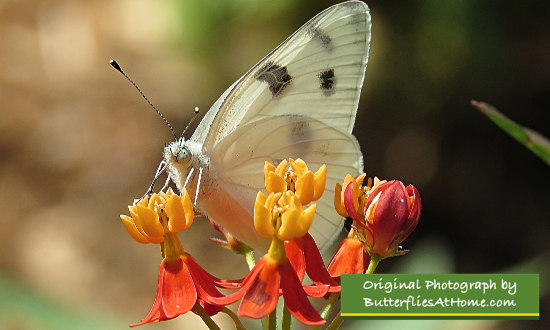 |
Showy Milkweed In 2023, we are growing an additional variety of milkweed in our butterfly garden. Showy Milkweed (Asclepais speciosais) is a tall, robust native herbaceous perennial with widespread rhizomes, with stems that grow from 1.5 to 5 ft tall. The gray-green leaves are covered in velvety hairs. It is native to the western United States, and can spread aggressively. Flowers are rose-purple, aging to yellow, and have the appearance of crowns. Its thick seed pods are 3 to 5 inches long, with each pod producing up to 240 blackish seeds. |
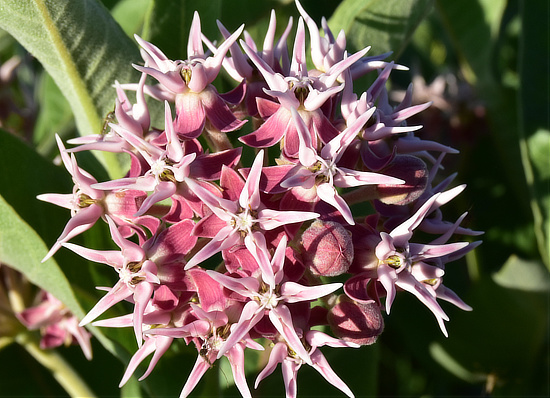 |
Growing Milkweed at Home
Each spring here in Tyler we start growing new Tropical Milkweed plants from seeds harvested from the previous year. They spout consistently and grow quickly, and are ready for transplanting in about a month. And if the winter is mild, young plants will come up from the roots of frozen Milkweeds.
Tropical Milkweed planted from seed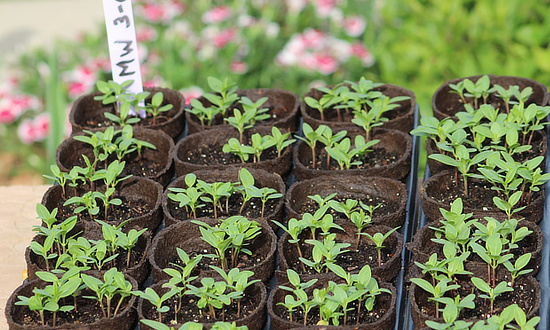 |
Milkweed sprouting after winter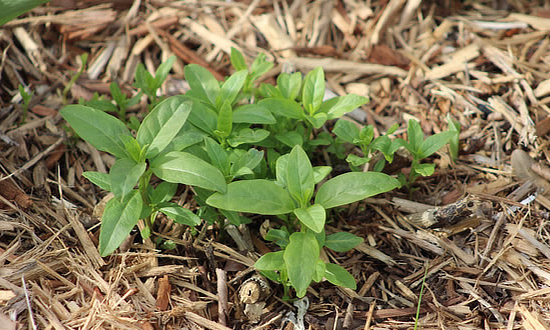 |
Zinnias
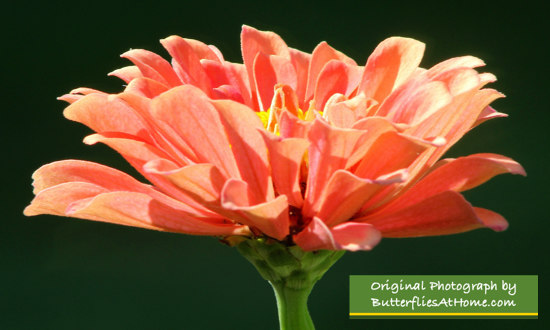 |
Zinnias are among the favorite flowers in our landscape. They are easy to grow from seed, provide all sorts of colors in the landscape, make perfect long-term cut flowers for inside .... and butterflies love them!
We grow California Giants from seed each year for those areas that are suited for these big 3-4 foot plants ... their blooms are spectacular, up to 4-5 inches in diameter! And we buy Dreamland Hybrid Zinnias seeds every year from Park Seed Company. These germinate quickly, and produce 2" blossoms on short, compact 12" plants ... ideal for spaces where we don't want height.
A large variety of butterflies enjoy our zinnias ... we have included several photos below.
Budding California Giant Zinnia 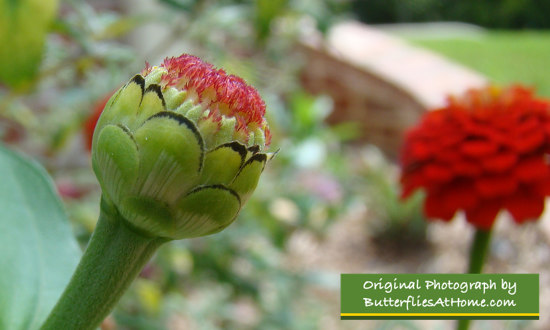 |
Painted Lady on Giant Zinnia 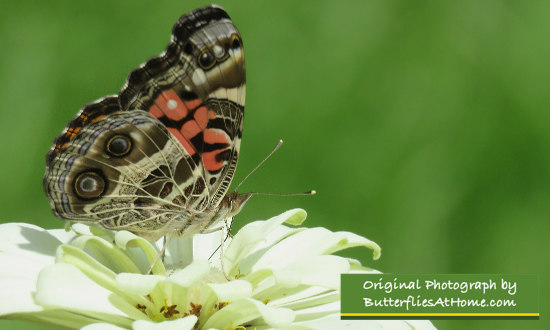 |
Gulf Fritillary 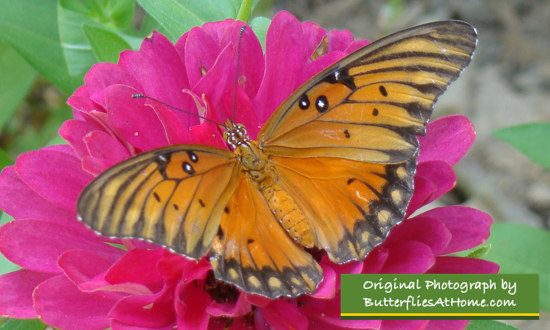 |
Long-tailed Skipper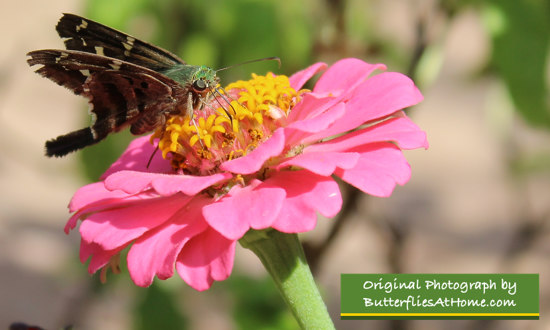 |
Giant Swallowtail 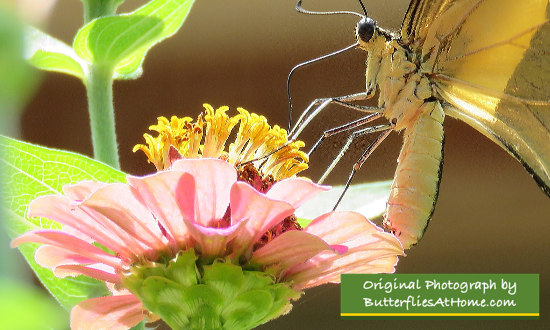 |
Silver-spotted Skipper 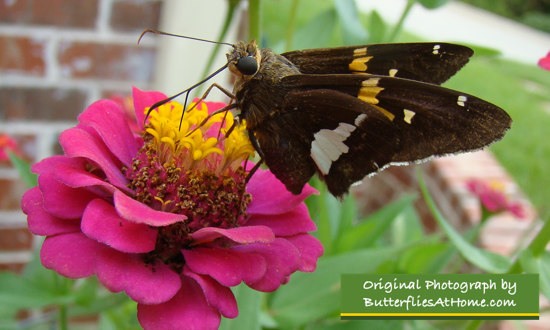 |
Female Tiger Swallowtail 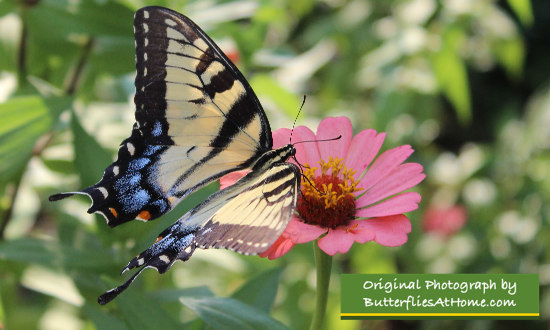 |
Fiery Skipper on Zinnia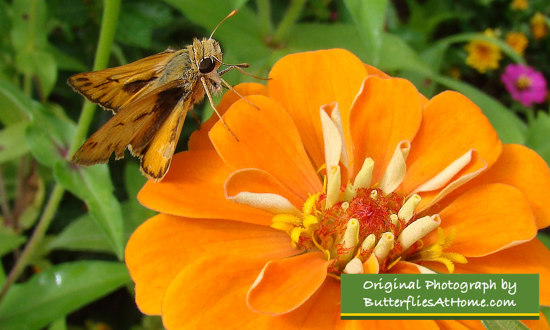 |
Pipevine Swallowtail 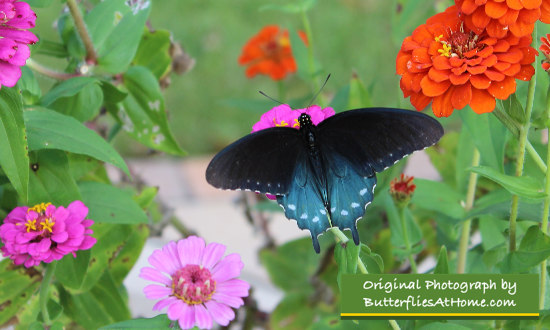 |
Giant Swallowtail Couple 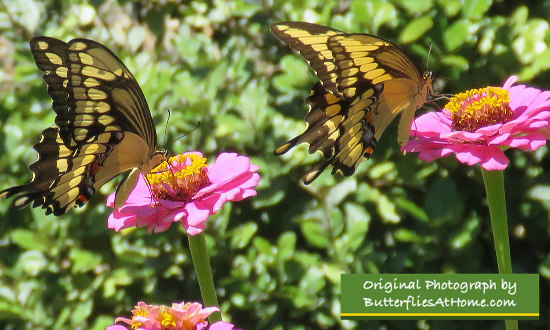 |
Verbena
Verbena is a part of our home landscape every year, and the butterflies love it!
We use several different colors, including orange (shown below), red, purple and pink. They are fairly cold tolerate in Tyler and most years return after winter.
Orange Verbena
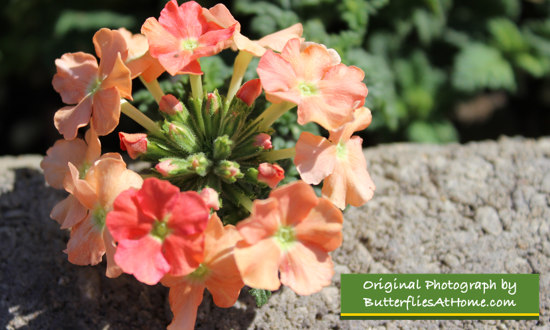 |
Purple Verbena 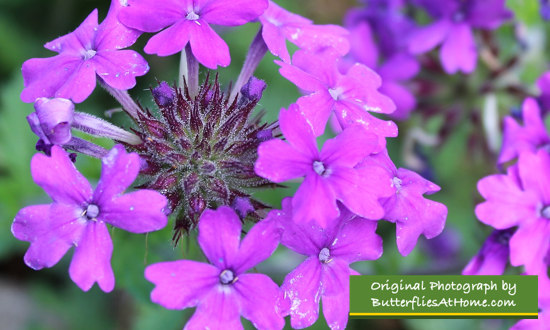 |
Tiger Swallowtail on Verbena 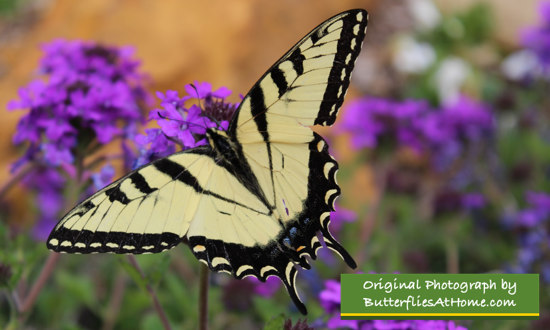 |
Dianthus
Dianthus is easy to grow, and comes in many colors and varieties, some sold colors like the red shown below, and mixed shades. They are also known as "pinks", and "Sweet William" due to their spicy fragrance. The plants are compact, typically 6"-12" in height.
They can bloom all year, are fairly cold tolerant here in Upper East Texas and come back quickly in the spring from last year's growth.
Brilliant red Dianthus in the landscape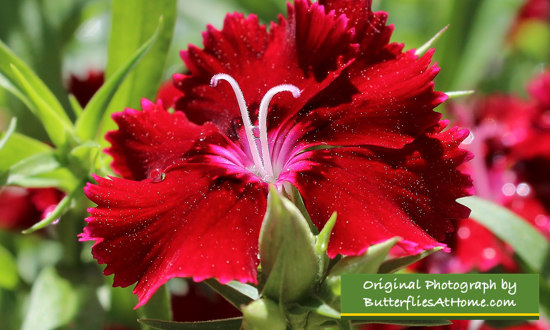 |
Dianthus 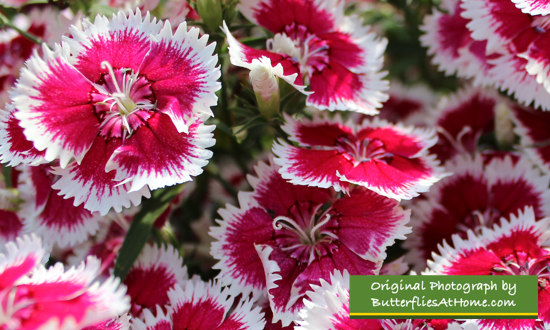 |
Silver-spotted Skipper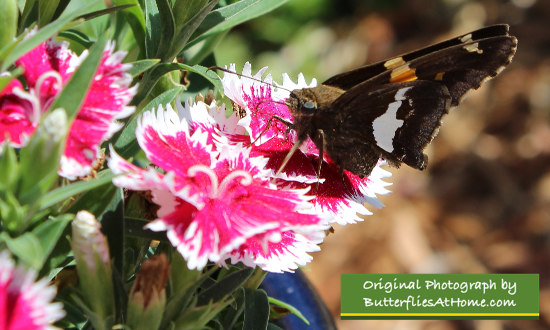 |
Pentas
Pentas are a favorite of butterflies, and we make sure we plant various colors each spring: red, pinks and solid whites!
These star-shaped flowers feature five petals, and are sun lovers. Sometimes they are known as the “Egyptian Star Flower”.
Gray Hairstreak on Pentas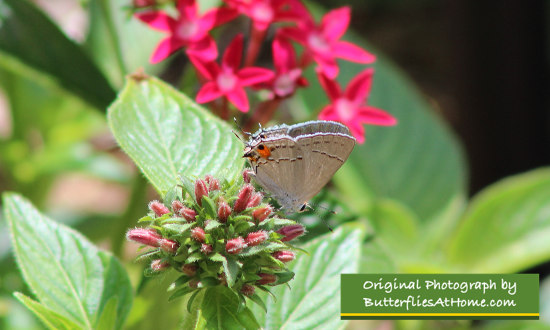 |
Red Admiral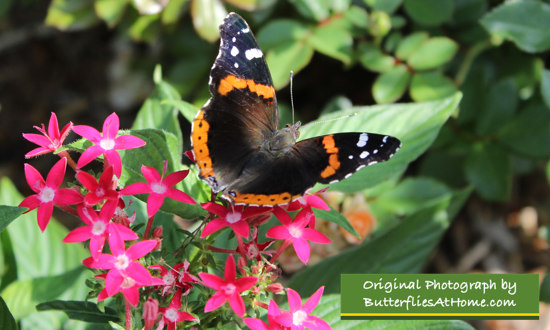 |
Passion Flower Vine (Passiflora)
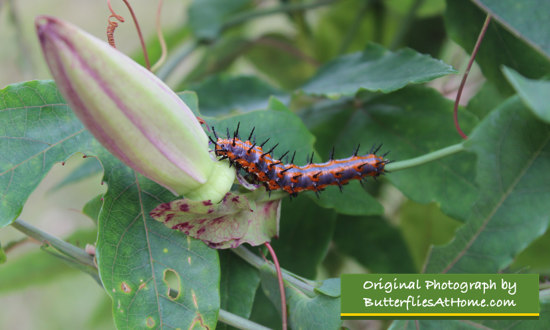 Gulf Fritillary caterpillar on Passion Vine |
The Passion Flower is a perennial vine producing delicate 3-5" flowers, and a host to a number of butterfly species. They are typically light blue or lavender in color, and a great climber on fences or trellises.
There are nearly 500 varieties of Passiflora in the world, with a common variety being Passiflora incarnata, often called Maypop. Unfortunately, a couple of species (the tropical red-flowered and even some of blue-flowered) are actually toxic and deadly to caterpillars. So do your research before purchasing your passion vine!
The Passion flower species are revered by many for their extraordinarily intricate blooms, which have become symbols of the Passion of Christ's crucifixion. Its name orginates from Roman Catholic priests of the late 1500s when they realized the flower told the story of Christ's passion, suffering and death. The flower's five petals and five petallike sepals represented the 10 apostles who remained faithful to Jesus throughout the Passion. The circle of hairlike rays above the petals suggested the crown of thorns that Jesus wore on the day of His death.
The vines are a host for a number of butterflies, including the Gulf Fritillary, Variegated Fritillary, Julia and Zebra Longwing.
The native Passion Vine here in Texas is agressive, putting up shoots from underground roots several feet from the original vine. The vines will produce a hollow, green egg-shaped fruit that produces a loud popping noise when crushed, hence the common name of "Maypop".
Purple Passion Vine 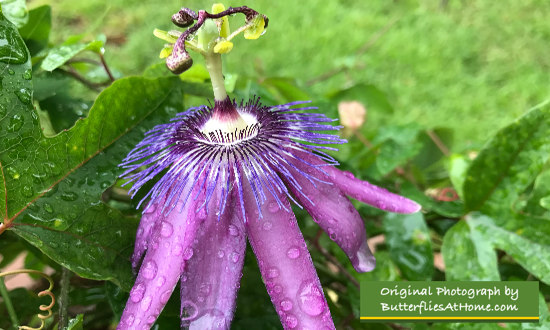 |
Red Passion Flower (non-toxic variety) 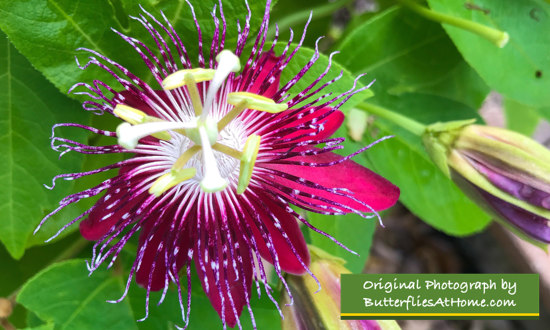 |
Native Texas Passion Vine Flowers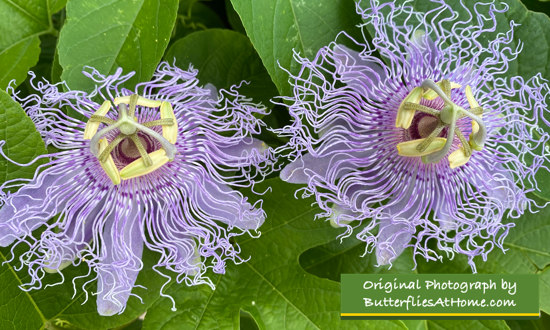 |
The Maypop ... fruit of the Native Passion Vine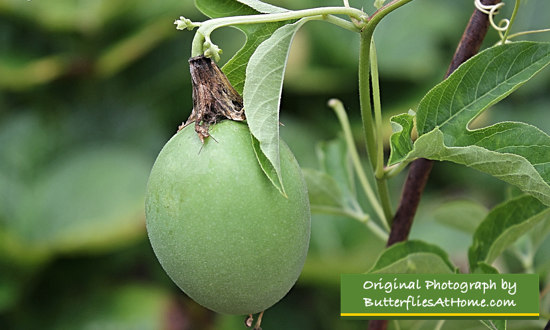 |
Salvia and Sage
Pink Salvia 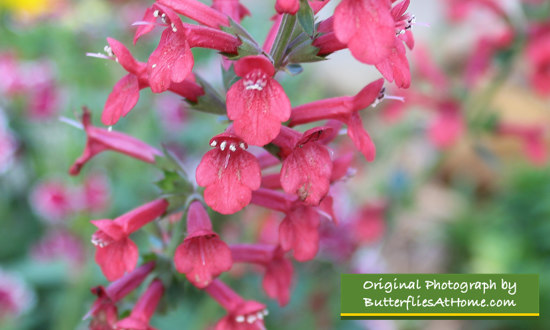 |
Black & Blue Salvia 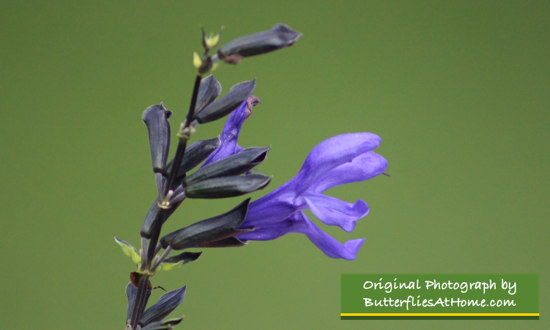 |
Hot Lips Salvia 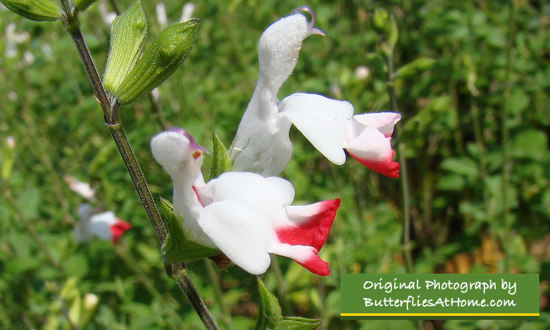 |
Scarlet Sage 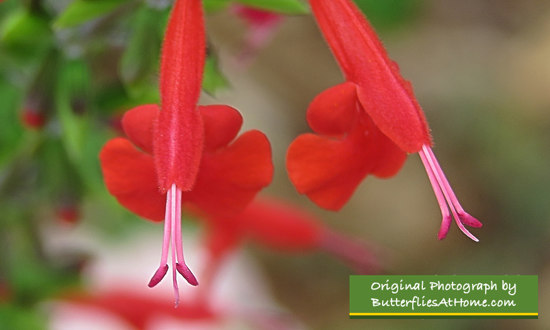 |
Hibiscus
We have grown hibiscus for years, actually decades! Their giant 6-8" blooms provide huge amounts of various summer color. Here in Upper East Texas, the winters are too harsh for their suvival, so we grow them more like an annual, replacing them with new plants each year.
Yellow Hibiscus with Red Throat 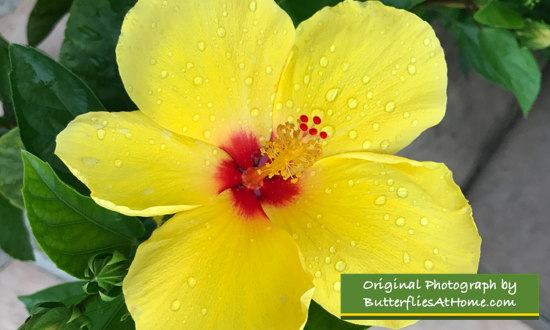 |
Delicate Pink Hibiscus 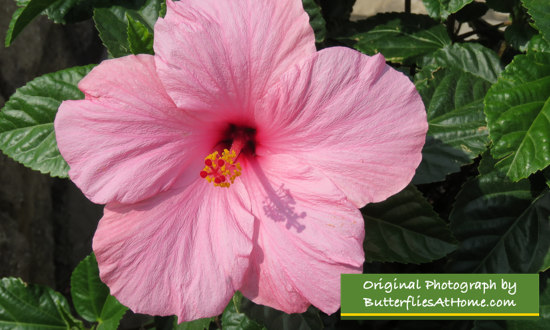 |
Hydrangea
Hydrangea 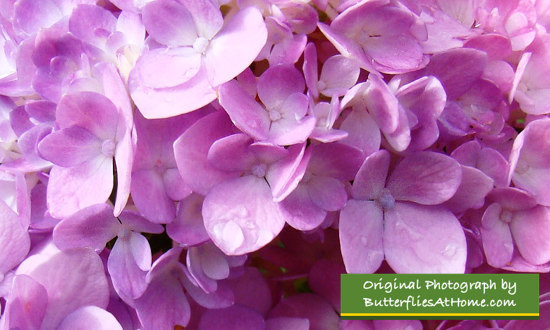 |
Buckeye on Hydrangea 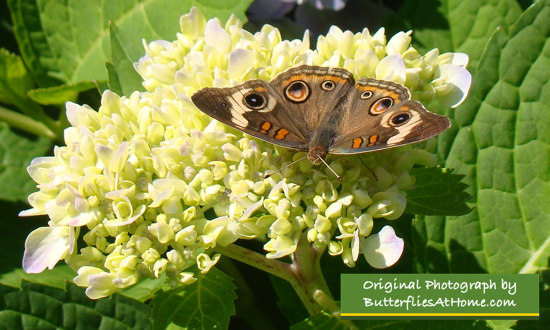 |
Pansies
Pansies have been a favorite of ours for decades! We plant them in mid-October, they survive even brutal winters and snow here in Tyler, and last until May when the heat returns. They add valuable color to the landscape through drab, dark winter days, and provide joy as cut flowers inside!
Happy Purple and White Pansy 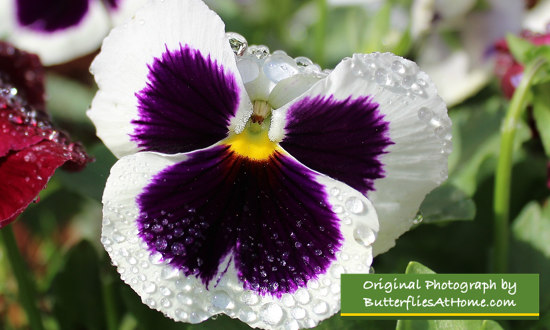 |
Black Swallowtail on Pansies 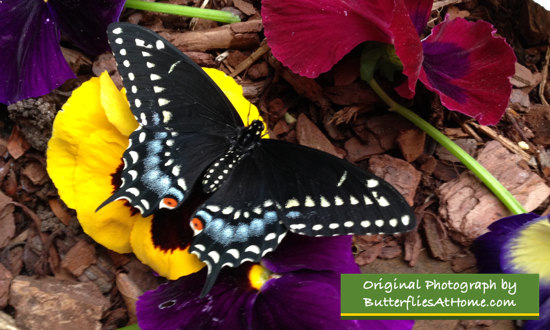 |
Portulaca
Portulaca 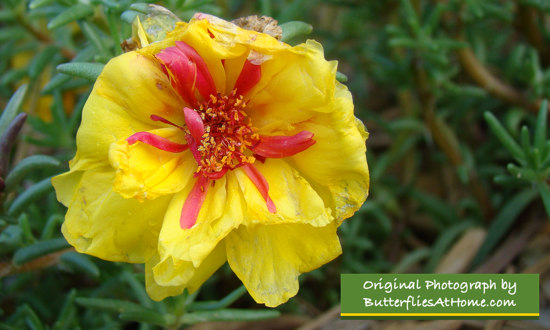 |
Skipper Enjoying Portulaca 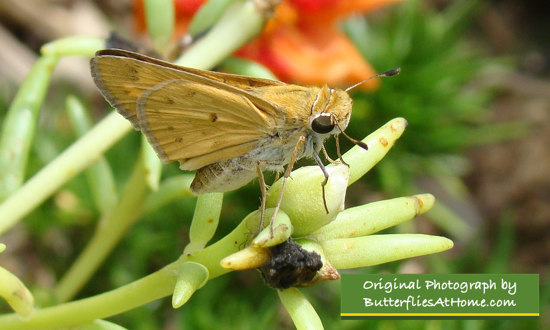 |
Roses
We love to visit the Tyler Rose Garden during different times of the year, and also enjoy growing our own roses in our home garden.
Pink Rose Bud in Morning Dew 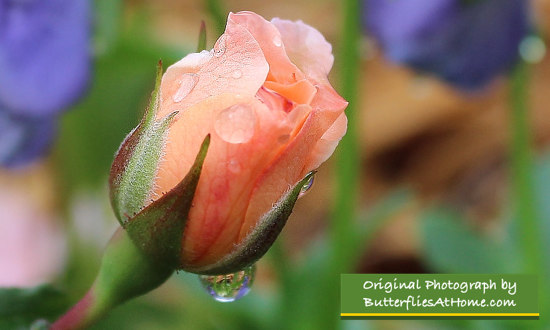 |
Yellow Rose Bud Waiting to Open 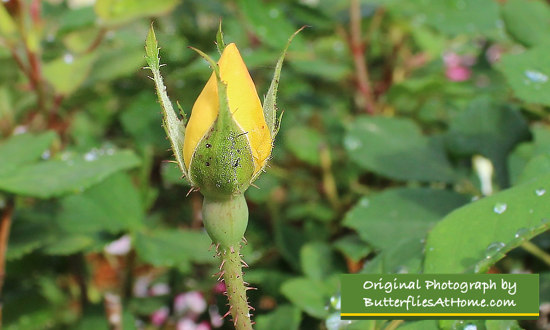 |
Delicate Pink Roses 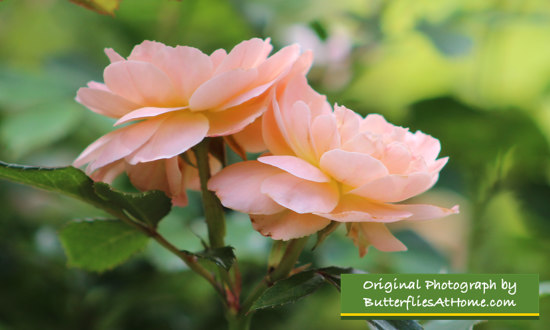 |
Pair of Skippers on Roses 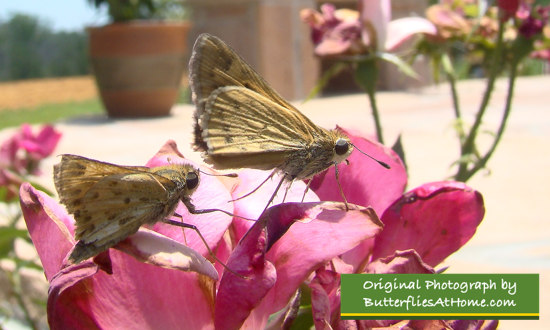 |
More Flowers in our Tyler Landscape!
Batface Cuphea 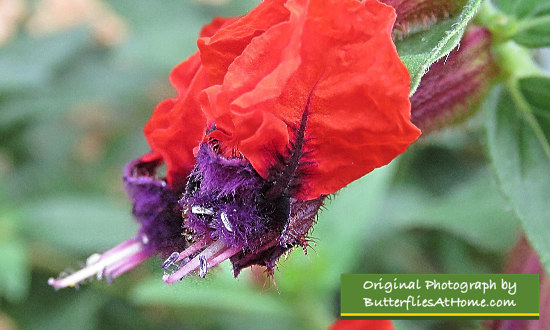 |
Azaleas & butterfly yard art!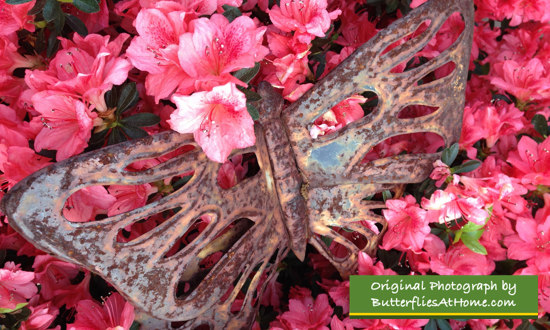 |
Bougainvillea 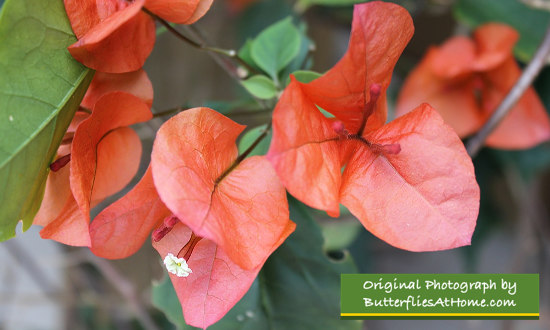 |
Crepe Myrtle 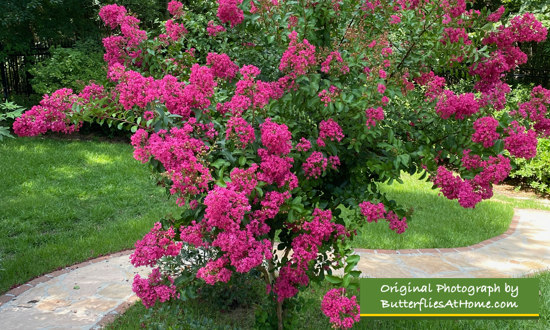 |
Dill ... with Swallowtail Eggs!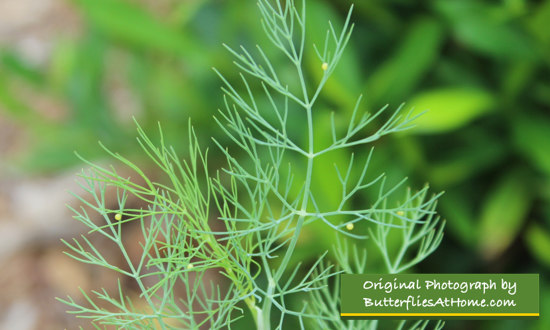 |
Firecracker 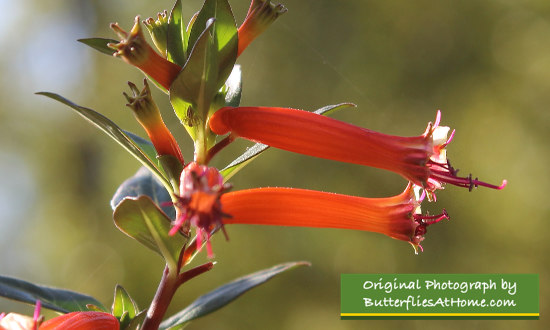 |
Geraniums 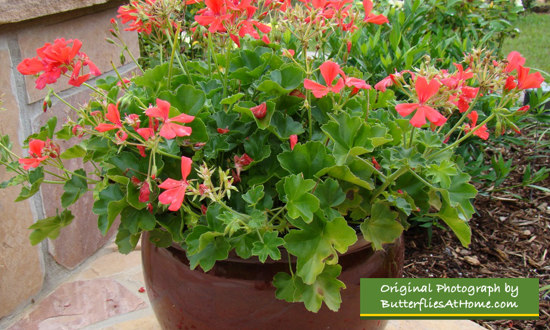 |
Marigolds ... an American favorite 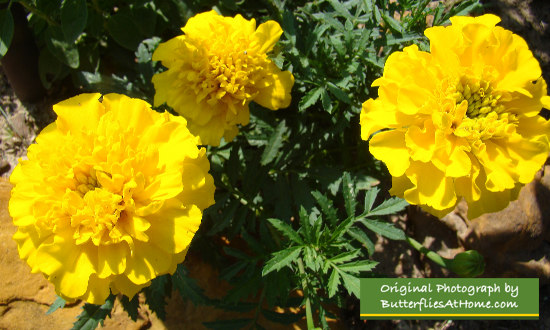 |
A bright, frilly Tulip in Spring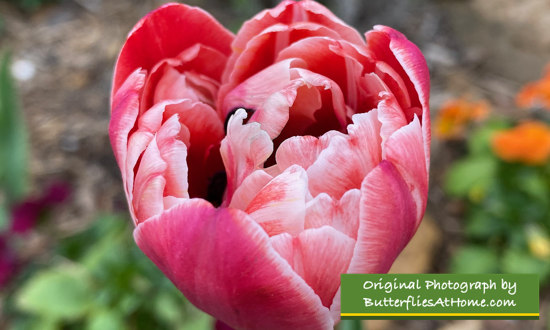 |
Easy to grow Periwinkles 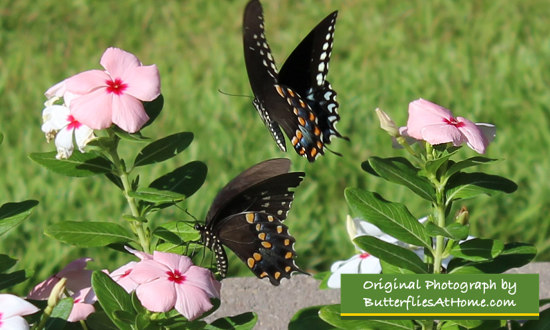 |
A Few More Flowers That We Enjoy in our Tyler Gardens!
East Texas Photo Galleries for Nature Enthusiasts
If you love flowers, you might enjoy our photo gallery of East Texas Butterflies showcasing Swallowtails, Monarchs, and Painted Ladies, to name a few. And you might like our recap of Tyler Garden Centers and Nurseries.
Our gallery of East Texas Birds is perfect for backyard nature lovers to explore, featuring bluebirds, woodpeckers, buntings, goldfinches, roadrunners, hawks, and much more.
Are you a hummingbird lover like us? Check out the photos and hummingbird videos in our Texas Hummingbird Gallery.
Master Gardeners of Smith County
The Master Gardeners of Smith County are specially trained volunteers who provide horticultural information and help to the citizens of Smith County, working through the Smith County AgriLife Extension office.
After 72 hours of instruction in botany, soil science, entomology, plant pathology, landscape, fruit and vegetable gardening, Master Gardener interns volunteer an equivalent amount of time within a year to further AgriLife Extension’s mission of delivering educational programs to the citizens of Smith County.
2023 is the 30th year of the Smith County program, which has been recognized by both the local community and peers in other Master Gardener programs for outstanding programs and community service.
If you are interested in becoming a Master Gardener, or in having a Master Gardener speak at your organization’s event, please phone 903.590.2980 or visit the Master Gardeners website

